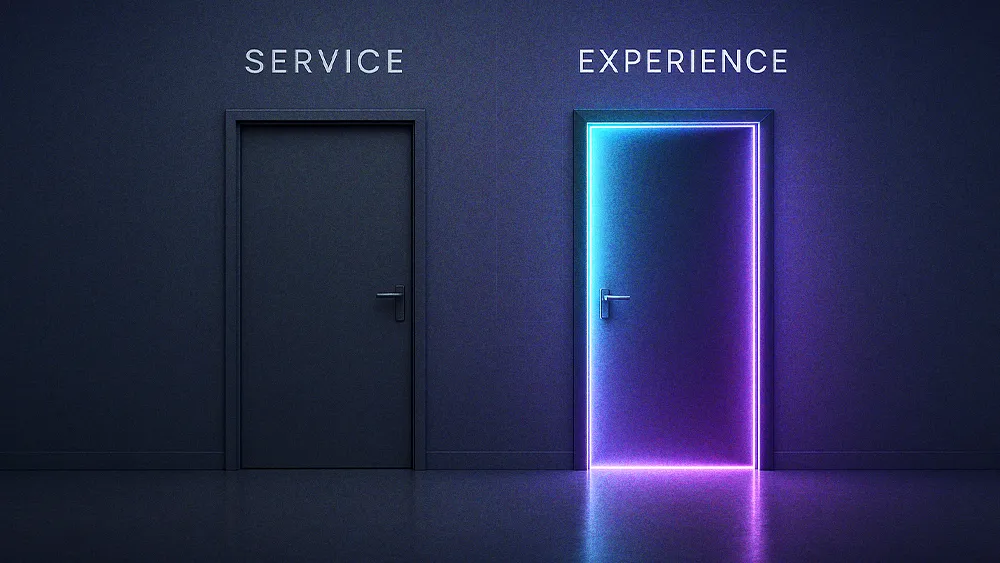
All articles
Reviving the 'Lost Art of Transformation' via Human-Centric AI with Cresta's Customer Strategy Leader
James Russell, Head of Customer Transformation at Cresta, reveals how to revive the "lost art" of human-centric change management.

Key Points
James Russell, Head of the Customer Transformation Group at Cresta, explains why enterprise tech adoption stalls when new tools clash with established workflows.
He describes how a human-focused approach to deployment is often the solution to failed tech adoption, especially for change management, workforce inclusion, and micro-learning.
Russell outlines his Onboarding+ strategy, which emphasizes clear goals, user value, and personalized training to ensure successful tech integration from start to finish.
I'm deliberate when I use the word 'transformation' because I believe it's a lost art, particularly in the contact center.
For most enterprises, successful tech deployment often depends more on the human element than the software itself. When new tools clash with established workflows and ingrained habits, they inevitably create friction that derails adoption. The challenge points to a critical oversight: in the pursuit of efficiency, organizations have favored rigid, process-driven rollouts that inadvertently overlook the very people they aim to serve.
For a practical perspective on the subject, we spoke with James Russell, Head of the Customer Transformation Group at Cresta. His work places him at the intersection of technology and human behavior, where even the most powerful AI tools can fail without proper implementation. Drawing on a career in data-centric sales and global delivery, Russell has built his methodology around a simple idea: unlocking technology's true value requires reviving the true meaning of transformation.
The lost art of transformation: Russell believes the industry has become so focused on rigid processes that it has forgotten the art of genuine change management. "I'm deliberate when I use the word 'transformation' because I believe it's a lost art, particularly in the contact center."
Tackling transformation with a personalized approach directly counters a decade-long trend toward increasingly regimented contact centers, Russell explains. While designed for efficiency, this structure often dehumanizes the change management process, which is where friction begins. When leaders operate from an “Ivory Tower,” imposing arbitrary changes disconnected from an agent's daily reality, they create resistance.
Cost of exclusion: Purchase decisions made by a few senior leaders leave the people who must use the tool out of the conversation entirely, Russell points out. "In those situations, somebody always feels left out," he warns. Genuine transformation requires a clear, top-down mandate to ensure all levels are bought in. Without it, agents become disengaged and caught between conflicting directives.
Vendor as mediator: When departments aren't aligned, the frontline agent suffers, caught between conflicting instructions from their supervisor and the QM team. "As the vendor, I'm often the only one trying to help all departments at once. My role is to be the voice of reason between all those competing parties," Russell explains.
His own intensive methodology, Onboarding+, makes a significant impact here. For Russell, true transformation rests on three core principles: knowing your starting point, defining your destination, and articulating user value. "You can't transform a process that doesn't exist. The real challenge is when a thousand people have been doing the same thing, in a very particular way, for the last ten years. That's where true transformation becomes difficult."
A journey with a clear destination: The guided approach Russell describes is the core of his "Onboarding+" philosophy, which he frames as a finite project to avoid becoming a perpetual support function. "It’s about guiding the user from point A to point B, not just dropping them off at the destination."
The "plus" of personalization: Personalization often means segmenting the technology itself, he continues. You pull out only the specific features relevant to each team, then tailor the deployment to their unique workflows. "You have to understand the business, the roles, who the users are, and how the technology will impact them. That's the foundation of personalization."
Micro-learning for modern users: Lengthy training sessions are inefficient because most users only need to master one or two parts of a tool, Russell explains. "People don't consume information in long training sessions anymore. So we build one-minute learning chunks designed to give people exactly what they need, right when they need it."
An approach like Onboarding+ might demand greater commitment to start, Russell concludes. But the long-term payoff more than justifies the cost. "This approach might take more time, effort, and resources upfront, but the long-term benefit will absolutely outweigh the initial investment."







